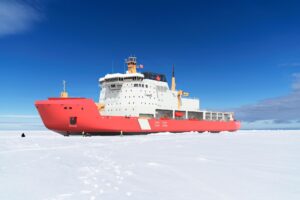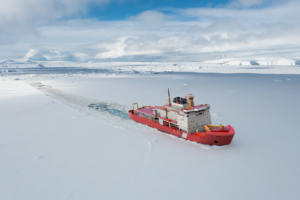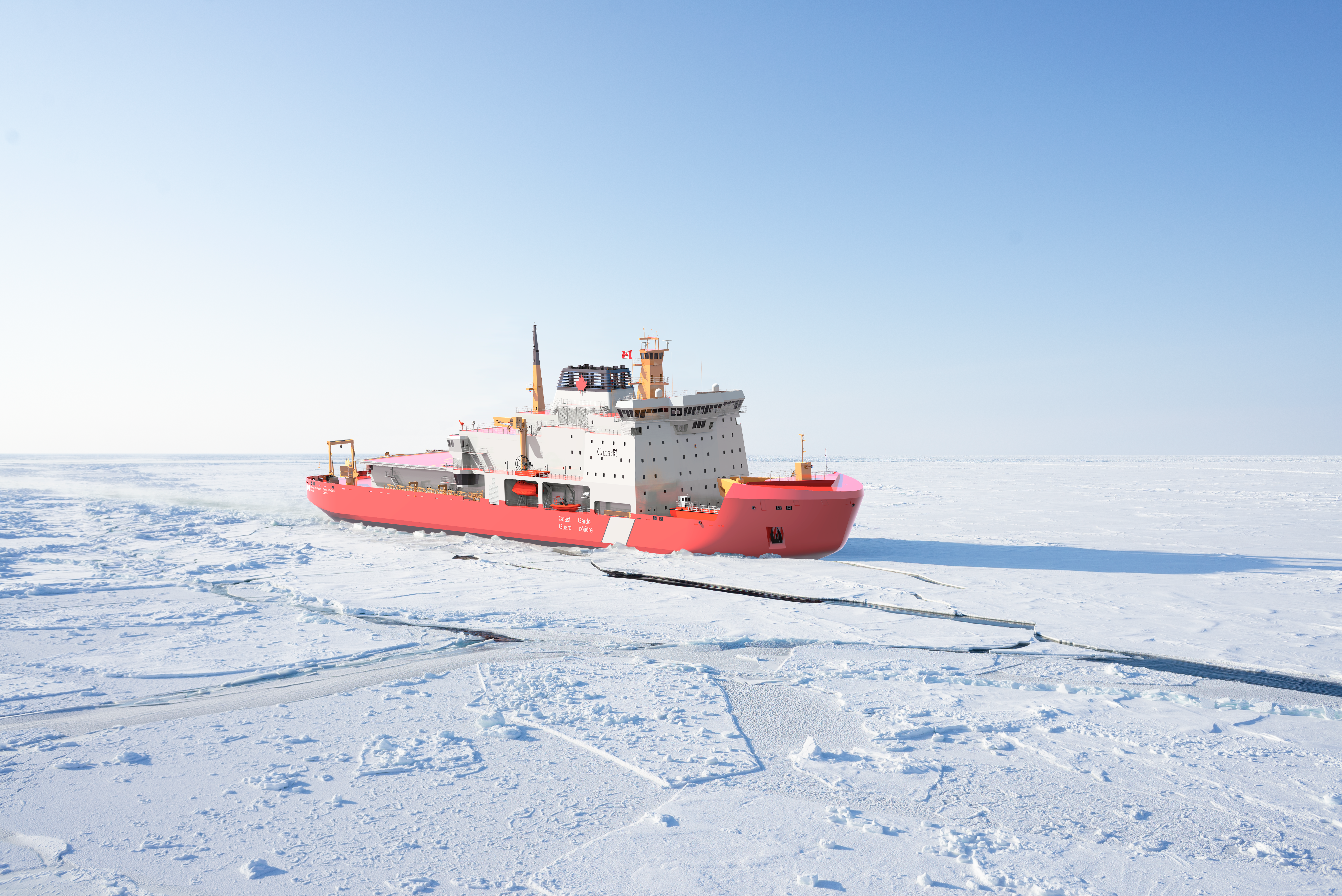January 31, 2023
It has been nearly 60 years since a Polar Icebreaker was built in Canada and the industry has come a long way since then. Under the National Shipbuilding Strategy, Seaspan is designing and building a new Polar Icebreaker for the Canadian Coast Guard. It will be one of the world’s most powerful conventional Icebreakers with a critical mission of protecting Canada’s Arctic sovereignty along with supporting Arctic science and research, environmental response, Northern resupply, and search and rescue.
We sat down with Russell Davison, Vice President of Coast Guard Programs at Seaspan to learn more about what makes the Polar Icebreaker the crown jewel of the Canadian Coast Guard’s fleet.

Q: The new Polar Icebreaker is replacing the CCGS Louis S. St-Laurent which is set to retire at the end of the decade. The new Polar Icebreaker is complex and benefits from significant advances in technology and innovation – what capabilities will it have?
A: The Polar Icebreaker is designed to safely navigate the Arctic’s ice-covered waters and will play a critical role in enabling the Canadian Coast Guard to patrol and protect 162,000 km of Arctic coastline. The Polar Icebreaker will help the Canadian Coast Guard sustain a year-round presence in Canada’s North in support of Indigenous Peoples and other northerners, arctic sovereignty, high-Arctic science (including climate change research), and the ability to respond to major maritime emergencies. It will have a top speed of over 18 knots, an operational range of about 30,000 nautical miles and be strong enough to break through very thick, multi-year ice.
Q: Why is the Canadian Polar Environment Important?
A: The Arctic is one of the few places left on Earth untouched by humans, and it’s more susceptible to climate change than the rest of the world. Receding sea ice is opening new trade routes from the Atlantic to Pacific (including the Northwest Passage). Rising temperatures and increased shipping through the Arctic requires more Polar Class vessels and Icebreakers, not fewer.
Q: What are some of the key design features of the new Polar Icebreaker?
A: With a displacement of 27,876 tonnes, the Polar Icebreaker will be 158 metres long, 28 metres wide and can accommodate up to 100 personnel. It’s carefully designed hull form will have the ability to operate farther north, in more difficult ice conditions and for longer periods than any icebreaker in Canada to date. The vessel is designated as a IACS Polar Class 2 Heavy Icebreaker which means it is strengthened against sea ice and winterized to allow safe operation and survivability of the crew, in the harshest environmental conditions.
It will have more than 40MW of installed power including an advanced ice-classed azimuthing propulsion system. The bow is carefully designed to exert pressure on the ice to help break it, then divert the pieces either side of the ship. The stern is also specially shaped for ice breaking, making the ship highly maneuverable in ice.
Onboard there are scientific laboratories, a moon pool to safely deploy equipment from within the ship, a helicopter flight deck and hangar, a vehicle garage and space for a future Remotely Piloted Aircraft System. That’s in addition to the fact the ship is already like a miniature city, with its own power station, sewage treatment plant and hotel accommodation.
Q: How is Seaspan preparing to build a ship like the Polar Icebreaker?
A: The design process begins with a detailed study of how the ship will be used in the Arctic, including its missions, types of ice and locations in the ocean where all this will happen. From here, our design teams start to determine requirements for the ship, its systems and equipment, and begin to iterate the design, optimizing its performance and managing necessary trade-offs. Shipbuilding is a unique art – like a mix of blacksmithery and brain surgery. Some of the materials required to withstand the incredible stresses and strains of icebreaking are very exotic, and difficult to work with. To de-risk the construction phase, we have plans to commence construction of a structural prototype later this year before we cut steel on the ship. This exercise will help our expert shipbuilders become familiar with the unique tools and processes required, to handle and work with high-tensile steels and complex structural designs.
Q: What are the next steps towards delivering this vessel?
A: Over the next few years, Seaspan will continue develop the design of the ship and purchase systems and equipment to enable its construction, while sustaining more than 600 jobs. With the support of our supply chain partners, we have built the right team to deliver the new Polar Icebreaker by 2030.
